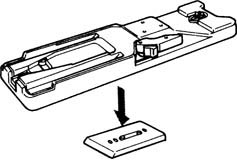Because lightweight cameras were the first generation of video cameras that could be operated from the shoulder, they were, and still are, frequently referred to as hand-held cameras. Although shoulder operation is suitable for fast breaking news stories or where the camera needs to be frequently repositioned at speed, the great majority of lightweight camerawork benefits from the camera being mounted on a pan/tilt head and tripod. Shaky and unsteady pictures are difficult to edit into standard ‘invisible technique’ productions, but they have become a feature in those programmes where an unsteady frame is equated with ‘realism’ and ‘naturalism’. The ‘camera surprised by events’ has become a popular camerawork style where the camera nervously on the move, with unsteady framing, has sought to replicate unrehearsed news coverage.
Pan and tilt heads
A good pan and tilt head will have adjustment for the centre of gravity (C of G) of the combination of camera/recorder, lens and viewfinder in use. If the C of G is not adjusted then the camera will either be difficult to move from the horizontal or it will fall forwards or backwards. When adding a 5-inch viewfinder on top of the camera, the C of G will need adjusting.
Adjustment of C of G balance should not be confused with mid-point balance, which involves positioning the camera and lens to find the point of balance on the head. If any additional accessories are added to the camera or lens (e.g. a pan bar with servo zoom control), then the balance needs to be readjusted.
The friction or drag control of the head depends on the shot and personal preference. Using a very narrow lens for an extreme close shot (e.g. a bird nesting) may require much more friction than that needed to pan the camera smoothly when following rapid impromptu movement (e.g. skating). Some cameramen prefer a heavy drag or ‘feel’ on the head so that there is weight to push against, whereas others remove all friction and the head can be panned at the slightest touch.
The head should have provision for locking the camera in the pan and tilt mode when not in use, plus a fail-safe system for locking the mounting plate attached to the base of the camera.
Tripods
If a tripod is to be of any value it must be quick to set up, rigid, with no tendency either for the legs to twist or flex. These essential design features need to be achieved with the lightest possible construction. It must have a good range of easily adjustable heights with an infallible locking clamp on each leg section. The feet of the tripod can be spikes that also fit into a spreader – a device to prevent the tripod legs from spreading out. The head-to-tripod connection can be a bowl fitting (100 mm or 150 mm), allowing the camera to be levelled using the built-in level bubble in the head, or a flat plate fixing which requires levelling to be carried out by adjusting one or more legs. A set of wheels can be exchanged for the spreader if the camera has flat level ground to reposition on.

Use two screws to attach adaptor plate to tripod (if possible) to prevent plate swivelling.

Slide camera into wedge until a click is heard. Check that camera is locked by attempting to slide camera back on plate.
Stead icam

Steadicam EFP is composed of a harness worn around the torso supporting the camera and detached view-finder monitor. When the operator walks, the device eliminates roll or shake in the picture.
Safety note: Obtain qualified instruction before using Steadicam to avoid injury.
Other camera mounts
There are a number of foldaway light portable dollies, which can be packed and transported in a car. They consist of track and a wheeled base on which a tripod can be securely mounted. They require a tracker and sufficient time to level the track before shooting.
Clamps, gimbals and helicopter mounts provide stability when the camera is required to be mounted in moving vehicles, etc.
There is also provision to remote control pan and tilt, zoom and focus when the camera is mounted on a hothead (a servo-controlled pan/tilt head) at the end of a crane or when the camera needs to be placed in an inaccessible location without an operator.
There is a large range of dollies, arms and cranes that can be hired suitable for any size location or camera development shot.
